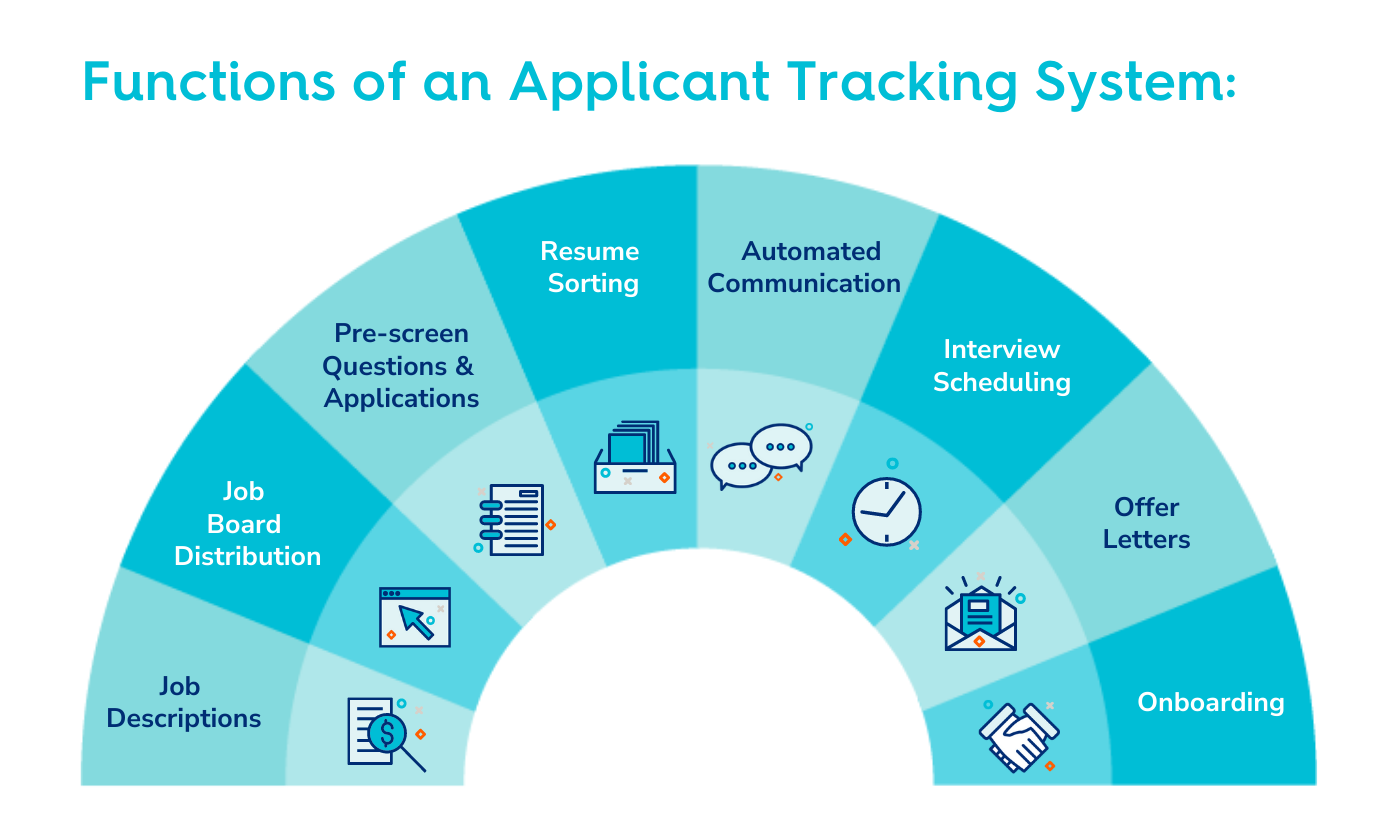
Understanding Applicant Tracking Systems
An Applicant Tracking System (ATS) is a software application designed to automate and streamline the recruitment and hiring process. It serves as a centralized hub where recruiters and hiring managers can manage job postings, track applicant progress, and collaborate on candidate evaluations. ATS platforms are equipped with tools to manage resumes, communicate with candidates, and analyze recruitment metrics to optimize hiring strategies.
Key Features of Applicant Tracking Systems
Modern ATS solutions offer a comprehensive range of features to enhance recruitment efficiency and effectiveness:
- Job Posting Management: Easily create and publish job postings across multiple job boards and career sites directly from the ATS platform.
- Resume Parsing: Automatically extract and categorize candidate information from resumes into structured formats for easy review and comparison.
- Candidate Database: Maintain a searchable database of candidate profiles, applications, and communication history for future hiring needs.
- Screening and Assessment Tools: Use customizable screening criteria and assessments to evaluate candidate qualifications and match them to job requirements.
- Collaboration and Communication: Facilitate collaboration among hiring teams with features for sharing candidate feedback, scheduling interviews, and sending automated notifications.
- Interview Management: Schedule and coordinate interviews seamlessly, with integration options for video interviews and calendar synchronization.
- Reporting and Analytics: Generate reports on recruitment metrics such as time-to-hire, source effectiveness, and candidate pipeline analysis to inform decision-making.
- Compliance and Security: Ensure adherence to data privacy regulations (e.g., GDPR, CCPA) and maintain secure storage and access controls for candidate information.
Benefits of Applicant Tracking Systems
Implementing an ATS offers numerous benefits that streamline recruitment processes and improve overall hiring outcomes:
- Increased Efficiency: Automates time-consuming tasks such as resume screening and interview scheduling, allowing recruiters to focus on strategic activities.
- Enhanced Candidate Experience: Provides a seamless application process with timely communication and status updates, improving candidate satisfaction and employer brand perception.
- Improved Hiring Decisions: Standardizes candidate evaluations and provides data-driven insights to identify top candidates more effectively.
- Cost Savings: Reduces reliance on external recruitment agencies and lowers hiring costs associated with advertising, candidate sourcing, and administrative overhead.
- Scalability: Scales to accommodate hiring needs during periods of growth or fluctuating workforce demands, maintaining consistency in recruitment processes.
- Regulatory Compliance: Helps ensure compliance with labor laws and regulations by maintaining accurate records and supporting audit trails.
- Integration Capabilities: Integrates seamlessly with other HR systems, such as payroll and onboarding platforms, to streamline the transition from candidate to employee.
Choosing the Right Applicant Tracking System
Selecting the best ATS for your organization requires careful evaluation of several factors:
- Business Requirements: Assess your current recruitment challenges and goals to determine the essential features and functionalities needed in an ATS.
- User-Friendliness: Choose a platform that is intuitive and easy for recruiters, hiring managers, and candidates to navigate without extensive training.
- Customization Options: Look for flexibility in customizing workflows, templates, and reporting features to align with your organization's unique hiring processes.
- Vendor Support and Reputation: Evaluate the vendor’s track record, customer support services, and reputation within the industry for reliability and responsiveness.
- Data Security: Prioritize ATS solutions that adhere to data protection standards and provide robust security measures to safeguard candidate information.
- Cost and ROI: Consider the total cost of ownership, including implementation, licensing fees, and ongoing maintenance, balanced against the potential benefits and ROI.
Implementing Applicant Tracking Systems
Successfully implementing an ATS involves strategic planning and effective deployment:
- Needs Assessment: Conduct a thorough assessment of your current recruitment workflows and identify areas for improvement or automation.
- Vendor Selection: Engage with ATS providers through demonstrations, trials, and references to assess how well their solution meets your requirements.
- Implementation Plan: Develop a detailed implementation plan with timelines, milestones, and responsibilities clearly defined for all stakeholders involved.
- Data Migration: Transfer existing candidate data and job postings into the new ATS while ensuring data integrity and accuracy.
- Training and Adoption: Provide comprehensive training and support to users to ensure they are comfortable with the new system and understand its capabilities.
- Monitoring and Optimization: Continuously monitor system performance, gather user feedback, and leverage analytics to optimize recruitment strategies and workflows.
Conclusion
Applicant Tracking Systems play a pivotal role in modernizing recruitment processes, offering efficiency, transparency, and data-driven insights that empower organizations to make informed hiring decisions and attract top talent. By automating repetitive tasks, enhancing collaboration, and providing actionable analytics, ATS solutions streamline the entire recruitment lifecycle from job posting to onboarding. Choosing the right ATS involves evaluating features, usability, integration capabilities, and support services to align with your organization’s recruitment goals and ensure long-term success in acquiring and retaining talent. With the right ATS in place, organizations can optimize their recruitment efforts, improve candidate experiences, and gain a competitive edge in today’s dynamic labor market.
